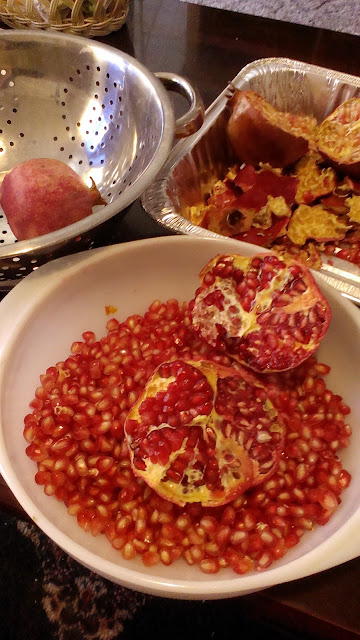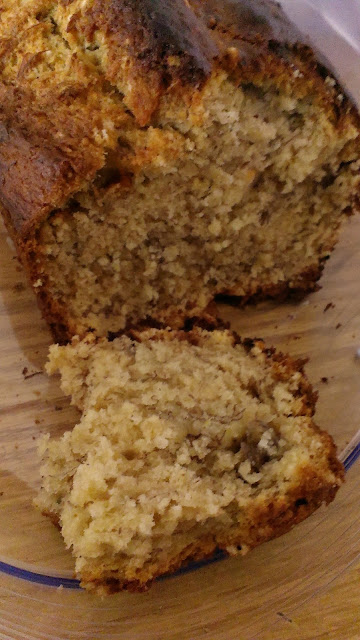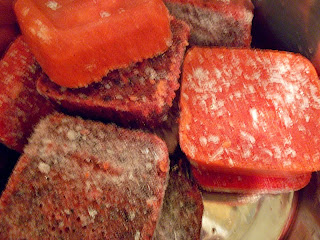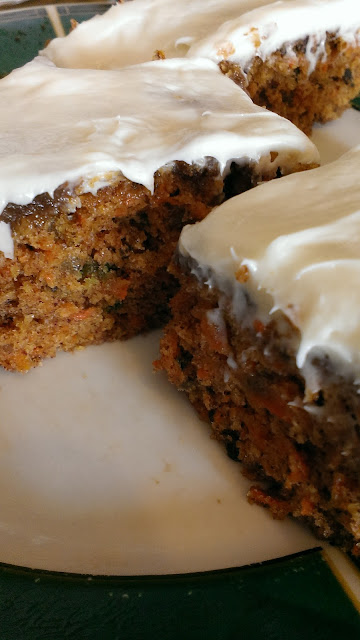 |
| Carrot Cake cut into individual servings |
Spiced Carrot Cake with Cream Cheese Frosting
This spiced cake is an ideal treat for the cooling Fall weather and it is an easy prep recipe. Pre-shred carrots and separate them for the recipe ahead of time and you cut the cooking and preparation time in half.
Pair the cake with cream cheese and butter frosting and you have a new family favorite!
Carrot cake is a great way to use up a huge batch of carrots.
The ingredients are listed below along with the cake directions. I used a frosting recipe from Allrecipes.com and will include the link below. (That frosting is the best one I have ever tasted or made. I will use no other from here on in and... it only has four ingredients. Wow!)
Carrots are a great source of vitamins and minerals and contain high amounts of beta carotene. Utilizing this sweet, orange root in recipes is a smart way to add a healthy touch to our diets. They are good sources of potassium, fiber and
vitamin C which is great for our bodies. The Clemson Extension Service has a similar recipe and other ideas for using carrots. Download it for free here >PDF<
I pre-shredded my carrots in a food processor a few days before I made this cake. Having them on the shelf and ready to go helped save me clean up time and preparation hassles. Bag them in increments for the amount of batter to be created. Check the lower half of the page for a printout of the recipe. The recipe makes one 9" by 9" cake or about 18 small cupcake sized muffins
Scrumptious Carrot Cake
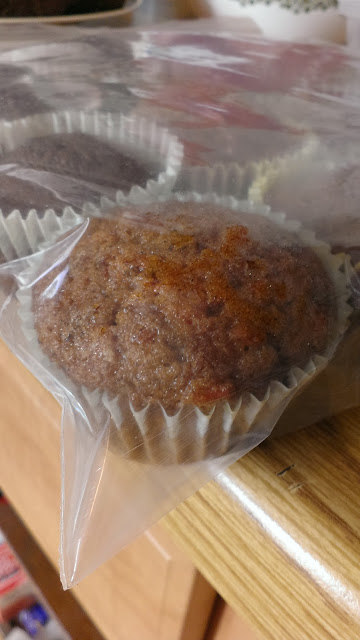 |
Bake smaller portions as carrot cake muffins |
Shopping list:
2-3 pounds of carrots
Eggs
Flour
Sugar
Baking Soda
Oil
Ground Cinnamon
Salt
Powdered Sugar
Cream Cheese
Butter
Vanilla
*Pecans
*Ground Nutmeg
*Ground Ginger
Recipe
Ingredients:
1 1/2 cups shredded carrots
2 eggs
1 cup sugar
1/2 cup oil
1 cup flour
1 teaspoon baking soda
1/2 teaspoon salt
1 1/2 teaspoons ground cinnamon
*Optional additions:
- 1/8 teaspoon ground nutmeg
- 1/8 teaspoon ground ginger
- 1/2 teaspoon vanilla
- 1/4 cup chopped pecans
 |
| Placing a cake on a cooling rack helps prevent cake center from falling and allows the icing stick to the top layer. |
Instructions:
Whip eggs until blended well. Slowly add oil and sugar until well mixed. Add salt, flour, and baking soda. Stir in cinnamon and other optional spices. Drop in carrot shreds and coat well. Bake in greased 9" x 9" pan at 350 degrees for about 25 to 30 minutes depending on your oven and altitude. Cake will be done when a toothpick inserted comes out clean. Let cool on cooling rack then remove carefully from baking dish. Frost with cream cheese frosting and store cake in cool place or refrigerate unused portions.
For Muffins
Lightly grease muffin pan surface. Drop in cupcake papers. Fill with two tablespoons of batter and bake for about 20 minutes at 350 degrees. Let cool on rack before frosting.
 |
| Cream cheese frosting and hand blender - Fun Stuff! Want one of the beaters for tasting? |
Recipe
Ingredients:
1 - 8 oz package of cream cheese - room temperature
1/4 cup of butter - room temperature
1 cup powdered sugar - finely sifted
1/2 teaspoon vanilla
Instructions:
Combine and cream together cream cheese and butter until light and fluffy. Add vanilla. Slowly incorporate powdered sugar. Store excess frosting in refrigerator.
Enjoy!
Print It!
Click on image and right click mouse for printable copy
Tools, equipment, and gadgets used in this recipe
Shop Amazon
(affiliate links)
Food Processor
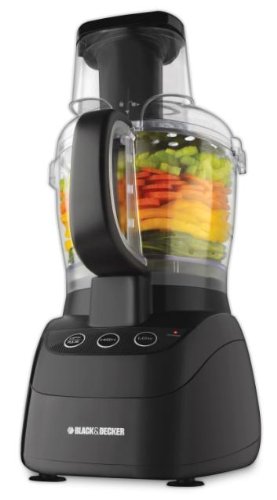 |
| The Black & Decker FP2500B PowerPro Wide-Mouth 10-Cup Food Processor is perfect for shredding carrots and mixing |
Cooling Racks
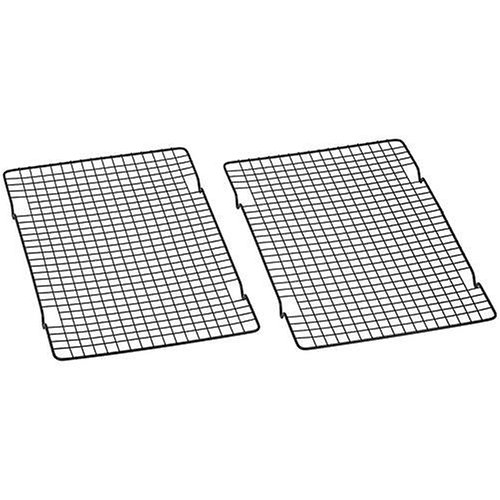 |
Baker's Secret 1061483 10-by-16-Inch Nonstick Cooling Rack, Set of 2 |
Hand Mixer
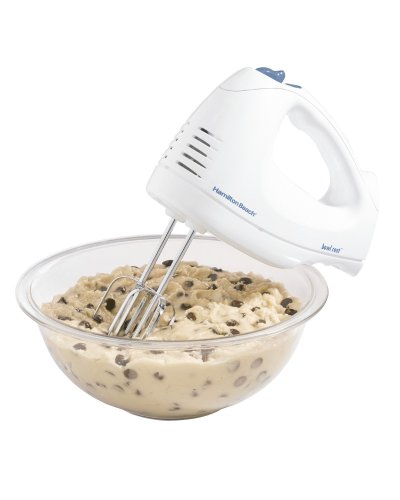 |
Hamilton Beach 62682RZ Hand Mixer with Snap-On Case |
Thank you for dropping in today. May your baking days be pleasant and all your cakes be successful!
Add your comment below and let me know you were here!



